

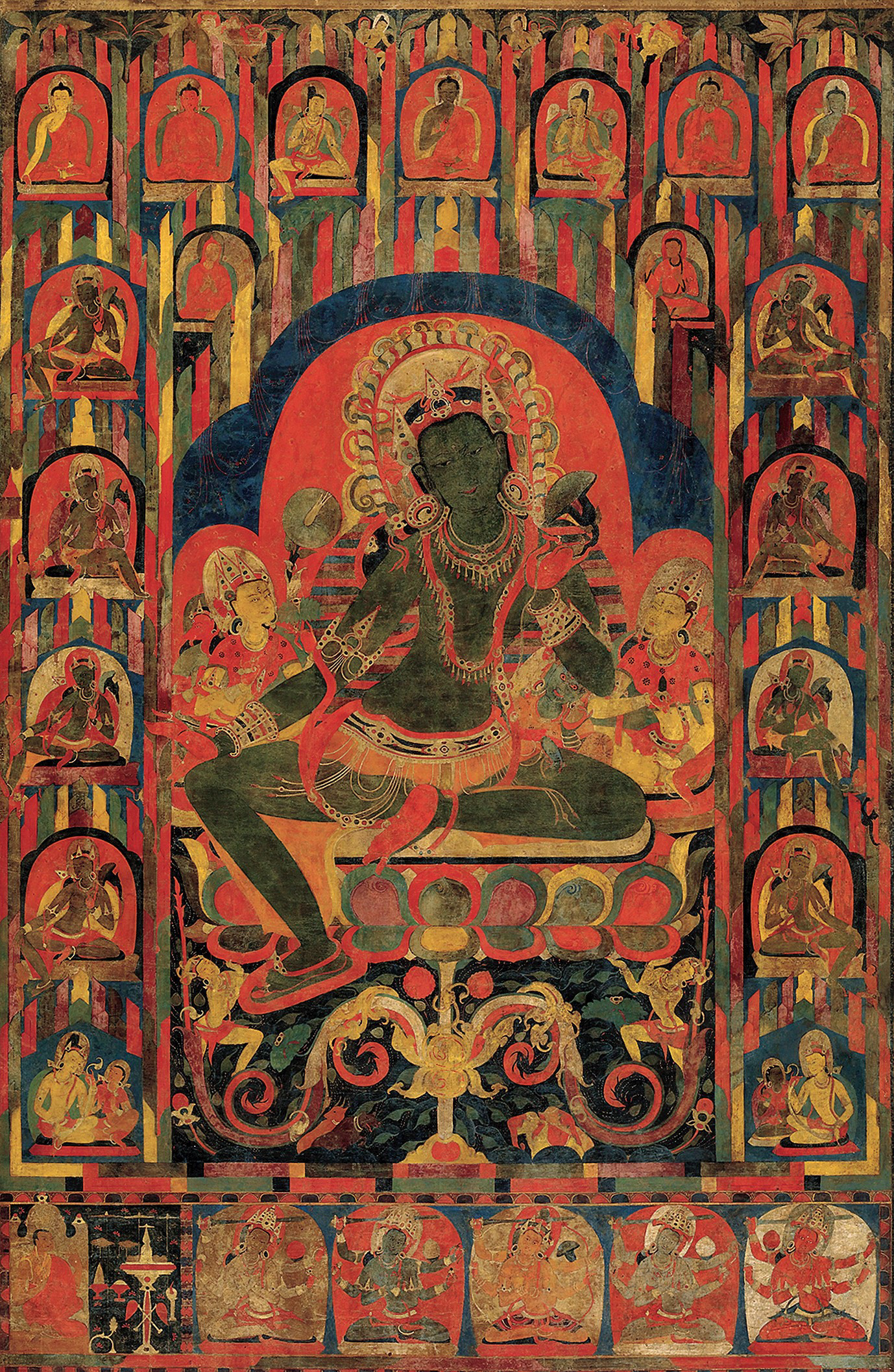
I was tasked to create a surrealist piece about Buddhist art and I was looking for something new to inspire me. I am a realist painter and surrealism is something new to explore. While I was browsing through some of my art books during the holiday, I came across a section about religious art. I have always been mystified by the colorful nature of Buddhist art, especially the "thangka", "a broad term for portable paintings on cloth or paper that can be stored rolled-up"⁴, and I wanted to incorporate some aspects of their style into my painting. I have embedded a film in YouTube that would us a closer look of the back story of Thangka.⁵
Thangkas function "as intermediaries between mortal and divine words" (Fisher 107) or in human terms, they are used for meditation. Today, it is also used as home decorative that I saw from my friends house when I visited Myanmar. In my view, the colorful and mystical nature of the paintings are so powerful and intriguing that even non-Buddhist adore such works. It might have not serve it's intended purpose but it helps preserve the art form.
Colors
The most striking thing for me in every Buddhist art that I have seen so far, are the colors. They are vibrant, high contrast and eye-catchy. As I dig deeper into the art form, I found out that the colors were intentional and have meaning.
"In Tibetan Buddhist art, various colors and elements are associated with the five Buddha families and other aspects and symbols:
White - Purity, primordial being
Green - Peace, protection from harm
Yellow - Wealth, beauty
Blue (light and dark) - Knowledge, dark blue also awakening/enlightenment
Red - Love, compassion
Black - Death, death of ignorance, awakening/enlightenment
Green - Peace, protection from harm
Yellow - Wealth, beauty
Blue (light and dark) - Knowledge, dark blue also awakening/enlightenment
Red - Love, compassion
Black - Death, death of ignorance, awakening/enlightenment
The five colors (Sanskrit pañcavarṇa – white, green, yellow, blue, red) are supplemented by several other colors including black and orange and gold (which is commonly associated with yellow). They are commonly used for prayer flags as well as for visualizing deities and spiritual energy, construction of mandalas and the painting of religions icons."⁶
Photo source: Rama Toshi Arya's Blog⁷
Photo source: Christies⁸
In this painting called "An Important and Fine Painting of Chamsing Begtse Chen", Tibet, 19th century, the color red is predominant along with a wrathful depiction of the deity. As a non-Buddhist, my initial thought was negative and hellish but based on my research it is the opposite.
Here is an excerpt from an article by Christies:
"Depicting the red wrathful protector Chamsing Begste Chen, this painting is a meditation aid that emphasises the ferocious qualities of this deity, as illustrated by his wrathful appearance. Typically, the principle deity tramples either an animal or a human (see below), symbolically stamping out illusion and suppressing the limitations of attachment to the earthly realm.
[...] The deity’s appearance is not meant to frighten but rather to convey the strength needed when trying to overcome the powerful obstacles that thwart man’s transcendence of the material world."⁹
In Buddhism, red symbolizes "love and compassion" and the deity exudes those characteristics even if from a non-Buddhist eye, it looks like a demon from hell. The act of trampling the enemies is a form of love in their context.
As I learn more about how Tibetan artists use colors, I can use the duality of colors where the visuals might be interpreted differently with the color choice but the underlying meaning of the colors bring more depth to it. I guess that's why this style is so mystical for me!
As I learn more about how Tibetan artists use colors, I can use the duality of colors where the visuals might be interpreted differently with the color choice but the underlying meaning of the colors bring more depth to it. I guess that's why this style is so mystical for me!
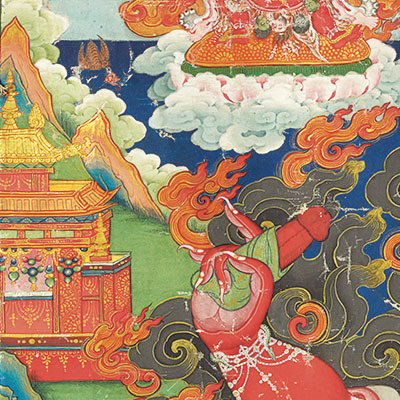
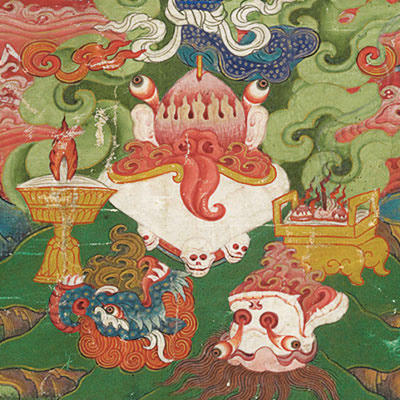

Photo source: Christies
But I've learned that not all Thangkas are colorful. In the second half of the seventeenth century, during the time of the Fifth Dalai Lama, are the "most interesting variations in technique represented by so-called black painting. [...] A relatively late appearance in Tibetan art, have yet added another means by which Tibetan artists can conjure up visions of mysterious, transcendent worlds. Like the fierce deities who are often the subject matter of these Thangkas, the blackness signifies the darkness of hate and ignorance as well as the role these qualities have to play in the awakening of clarity and truth." (Fisher 108-110)
Photo source: Fisher, Robert E. Art of Tibet. Thames and Hudson, 1998.
“For Buddhists, art helps them envision the abstract Buddhist teachings in tangible form.”
Source: Artsmia, Minneapolis Institute of Art, director. Art of Asia: Buddhism - The Art of Enlightenment. YouTube, YouTube, 14 June 2007, https://www.youtube.com/watch?v=oJa4r9NoXmQ. Accessed 5 Jan. 2023.


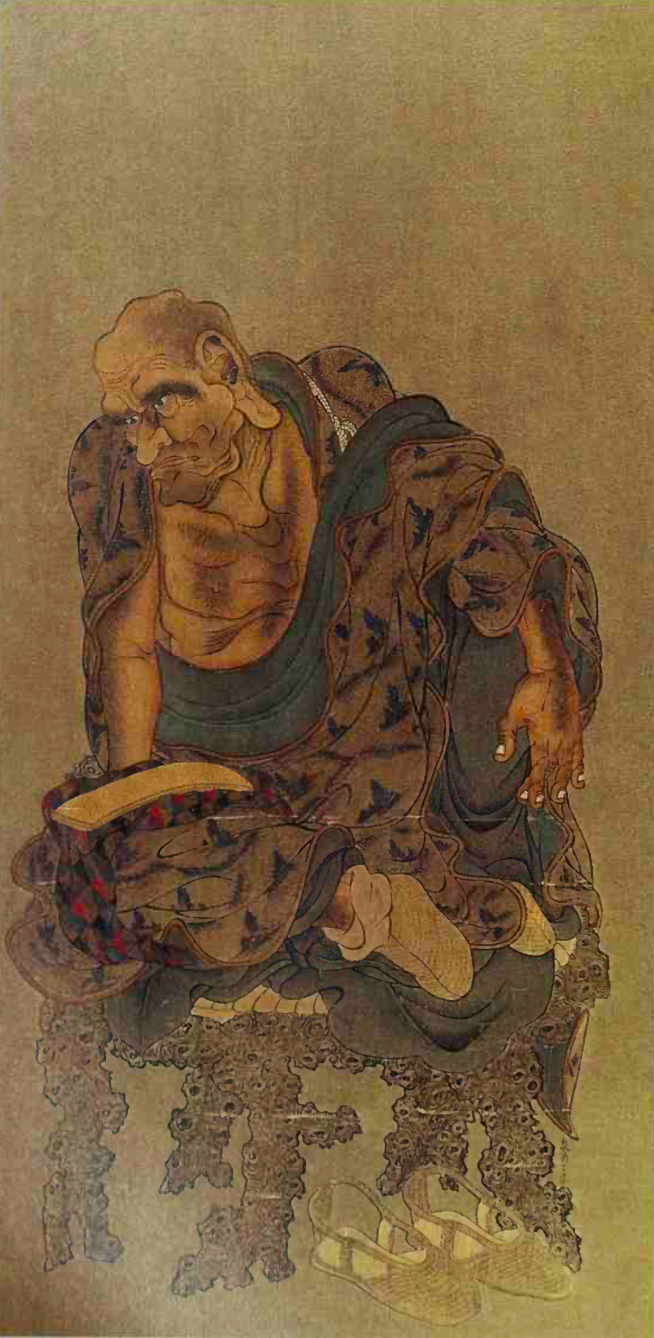
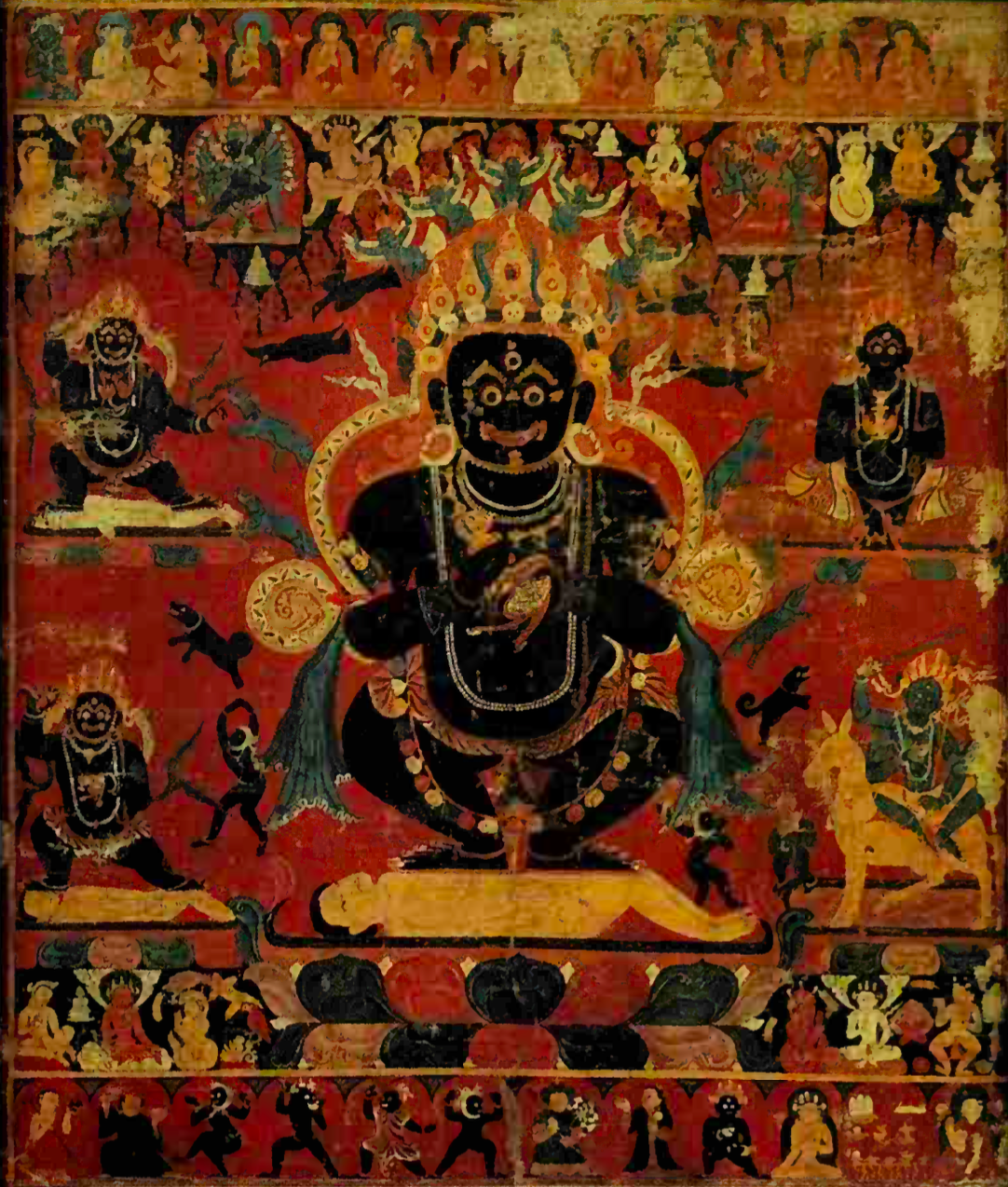

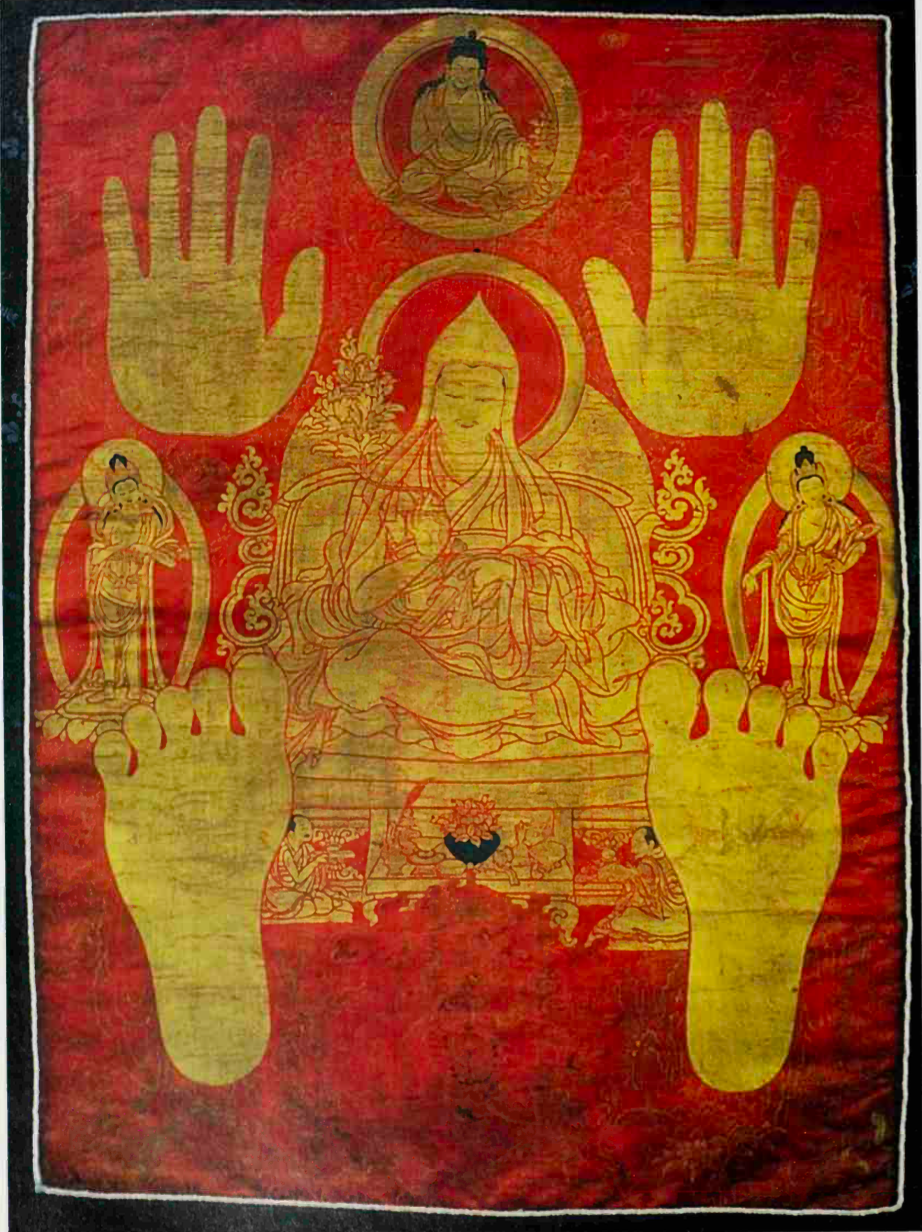


All photos were taken from Fisher, Robert E. Art of Tibet. Thames and Hudson, 1998.
Symbols
In contrast with Catholic-themed artworks, Buddhist art is representational and is rich in symbols that help tell the story of their teachings. Here is an in depth list of symbols in Buddhist art across Asia.
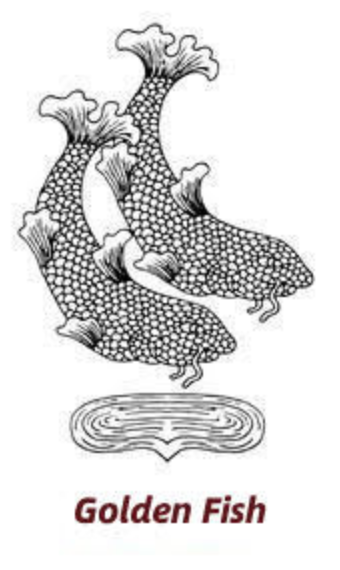
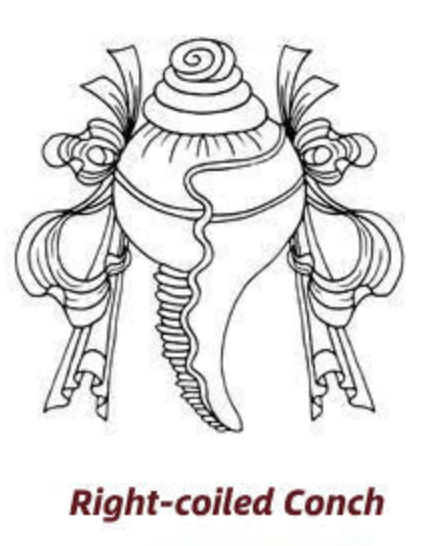
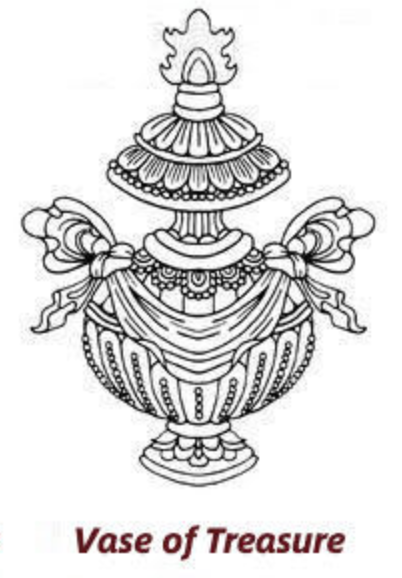



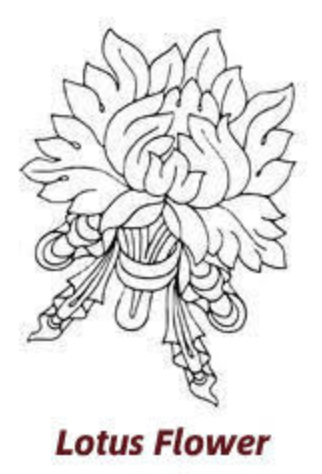

Photo source: 8 suspicious symbols of Tibetan Buddism¹¹
But I am more interested in the wrathful deities and the way they are depicted in Tibetan art.
"In the Buddhist Tantras, Buddhas and Bodhisattvas often manifest in unusual and fierce forms, which are used in tantra as yidams or meditation deities. While some of these deities have a hideous and fierce appearance, they are not personifications of evil or demonic forces. The ferocious appearance of these deities is used to instill fear in evil spirits which threaten the Dharma."¹²
Because there are many deities in Buddhism, let's focus on my top 3 favorites: Rahula, Citipati and Yama.
Rahula
An oath-bound protector of Dzogchen, "a tradition of teachings in Indo-Tibetan Buddhism and Yungdrung Bon aimed at discovering and continuing in the ultimate ground of existence."¹³
Photo source: Museum, Rubin. “Rahula and His Assembly - Google Arts & Culture.” Google, Google, 2011, https://artsandculture.google.com/asset/4QFSGFys5KiBHw.
Citipati
Their symbol is meant to represent both the eternal dance of death as well as perfect awareness.¹⁴
Their symbol is meant to represent both the eternal dance of death as well as perfect awareness.¹⁴
Photo source: Wikipedia contributors. "Citipati (Buddhism)." Wikipedia, The Free Encyclopedia. Wikipedia, The Free Encyclopedia, 11 Jun. 2021. Web. 13 Jan. 2023.
Yama
The lord of death.¹⁵
The lord of death.¹⁵
Photo source: Wikipedia contributors. "Yama." Wikipedia, The Free Encyclopedia. Wikipedia, The Free Encyclopedia, 10 Jan. 2023. Web. 12 Jan. 2023.
I really like these characters depicted as they are full of emotions and life. Everything about this piece of artwork is mystical - from the color choices to its purposes. The energy of the deities are felt. Every time I look at it, there's something new to see. Small details and hidden gems scattered around.
As I reflect now about my surrealist artwork, I want to incorporate three things based on what I have learned. One, color with intention. Two, fill it with emotions and life. Lastly, keep it mystical.
This was a very enriching experience. What should I explore next?
¹ "File:Yama tibet.jpg." Wikimedia Commons, the free media repository. 24 Oct 2022, 21:01 UTC. 2 Jan 2023, 13:25 <https://commons.wikimedia.org/w/index.php?title=File:Yama_tibet.jpg&oldid=698829954>.
² Marchwarden , Haldir. “The Sacred and the Profane - on the Representation of the First and Second RJE Btsun Dam Pa Khutukhtus in Mongolian Buddhist Art.” Elisabeth Haderer: The Sacred and the Profane - On the Representation of the First and Second RJe Btsun Dam Pa Khutukhtus in Mongolian Buddhist Art, 2021, https://www.asianart.com/articles/haderer/9.html.
³ Contributor, Curator. “Ashtamahabhaya Tara .” Metmuseum.org, 2014, https://www.metmuseum.org/art/collection/search/42600?exhibitionId=%7BA808BA70-E0ED-4E4A-A936-2AF53997503A%7D&oid=42600&pg=1&rpp=20&pos=19&ft=%2A.
4 Wikipedia contributors. "Tibetan art." Wikipedia, The Free Encyclopedia. Wikipedia, The Free Encyclopedia, 8 Jan. 2023. Web. 3 Jan. 2023.
5 Asiasociety, Editor, director. A Closer Look at Tibetan Thangkas. YouTube, YouTube, 17 Apr. 2018, https://www.youtube.com/watch?v=EVocNP7zgQw&t=5s. Accessed 3 Jan. 2023.
Fisher, Robert E. Art of Tibet. Thames and Hudson, 1998.
6 Wikipedia contributors. "Five Tathāgatas." Wikipedia, The Free Encyclopedia. Wikipedia, The Free Encyclopedia, 12 Dec. 2022. Web. 5 Jan. 2023.
7 Arya, Rama. “The Ancient Art of Tibetan Thangka Painting in Dharamshala.” Rama Toshi Arya's Blog, 19 July 2019, https://ramaarya.blog/2019/07/05/the-ancient-art-of-tibetan-thangka-painting-in-dharamshala/.
8 Coyle, Leiko. “Collecting Guide: Teachings of the Thangka: Christie's.” Thangkas of Tibet: A Collecting Guide | Christie's, 2016, https://www.christies.com/features/Collecting-guide-Teachings-of-the-thangka-7077-1.aspx.
9 Coyle, Leiko. “Collecting Guide: Teachings of the Thangka: Christie's.” Thangkas of Tibet: A Collecting Guide | Christie's, 2016, https://www.christies.com/features/Collecting-guide-Teachings-of-the-thangka-7077-1.aspx.
10 Coyle, Leiko. “Collecting Guide: Teachings of the Thangka: Christie's.” Thangkas of Tibet: A Collecting Guide | Christie's, 2016, https://www.christies.com/features/Collecting-guide-Teachings-of-the-thangka-7077-1.aspx.
11 Contributor, Eric. “8 Auspicious Symbols of Tibetan Buddhism.” Understanding the 8 Auspicious Symbols of Tibetan Buddhism, 2022, https://www.greattibettour.com/tibetan-culture/8-auspicious-symbols-of-tibetan-buddhism.html.
11 Contributor, Eric. “8 Auspicious Symbols of Tibetan Buddhism.” Understanding the 8 Auspicious Symbols of Tibetan Buddhism, 2022, https://www.greattibettour.com/tibetan-culture/8-auspicious-symbols-of-tibetan-buddhism.html.
12 Wikipedia contributors. "Buddhist deities." Wikipedia, The Free Encyclopedia. Wikipedia, The Free Encyclopedia, 6 Jan. 2023. Web. 7 Jan. 2023.
13 Wikipedia contributors. "Dzogchen." Wikipedia, The Free Encyclopedia. Wikipedia, The Free Encyclopedia, 25 Dec. 2022. Web. 10 Jan. 2023.
14 Wikipedia contributors. "Citipati (Buddhism)." Wikipedia, The Free Encyclopedia. Wikipedia, The Free Encyclopedia, 11 Jun. 2021. Web. 10 Jan. 2023.
15 Wikipedia contributors. "Yama." Wikipedia, The Free Encyclopedia. Wikipedia, The Free Encyclopedia, 10 Jan. 2023. Web. 12 Jan. 2023.